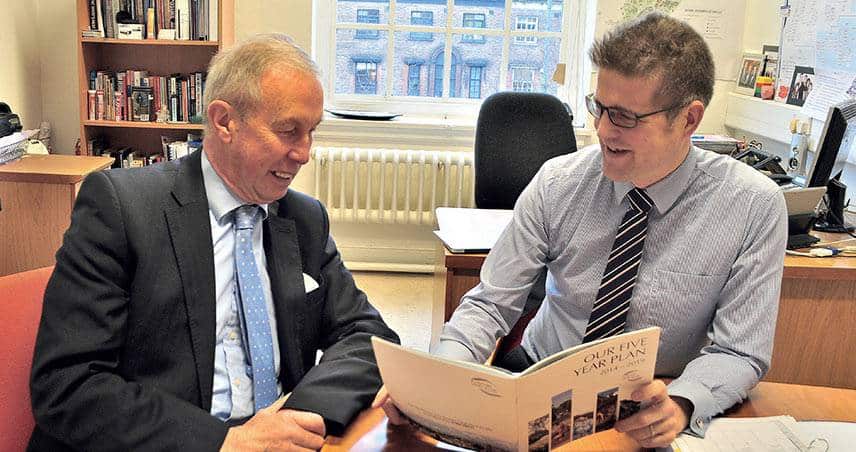Borough council leader David Jukes has set out his hopes for relocating key town hall buildings as part of his ambitious five-year plan for Tunbridge Wells.
He believes that a complete redevelopment of the borough’s civic offices would represent best value through creating new facilities at Mount Pleasant Avenue, off Mount Pleasant Road, on a council-owned car park being leased by Axa.
Speaking after last month’s cabinet meeting, in which members voted in principle for a new £12.5 million town hall, Cllr Jukes confirmed the preferred option remained to carry out the project in tandem with a £25 million scheme replacing the Assembly Hall, located on the site of the Great Hall Car Park.
This comes in addition to separate proposals for a £12 million cultural hub incorporating library, art gallery and adult education services in a new central building within the town. This has so far received funding of £5.2 from the Heritage Lottery Fund and Arts Council, and could be completed by 2018.
Cllr Jukes said: “I think our five-year plan has been effective so far. We are well down the road to starting development at Mount Pleasant Avenue, which will have 40,000 to 50,000 sq ft of office space and give us the opportunity to relocate the council.
“We would let the remainder of the building that we did not require, which would give an income to the council for many years, so it’s a big move.
“In order to refurbish our current council building, it would cost £10.5 million, or we could build a new one for £12 million, which makes more economic sense. This will leave around 30,000 to 40,000 sq ft to be used by businesses, which should bring us an annual income of £800,000 a year.”
Speaking on the overall objectives of the five-year plan, borough council chief executive William Benson felt it was progressing well.
He said: “There was a time when we were worried Tunbridge Wells was going to become a dormitory town, but the range of busineses that are now flourishing has been important.
“Our plans are not about being a town where people go elsewhere to spend money – Tunbridge Wells is actually a place where people want to stay and go out.
“We aim for a good combination of a town that’s doing well for itself, but also having schools and cultural facilities that make it sustainable.”
The council acknowledged such sources of revenue would be required, given that it has suffered a major reduction of £3.2 million in revenue from government grants since 2010. In addition, by 2020, the borough will no longer receive any government grant funding and will be required to be entirely self-sustaining.
Cllr Jukes explained that the facilities it is planning to create would help meet the needs of a growing town.
He added: “The population of Tunbridge Wells has increased 15 per cent over the past decade. We have brilliant schools, and it is a great place to live. We are within a mile of the countryside and also have superb businesses here.
“What we are doing is trying to make it more attractive for organisations to make their headquarters here. Our transport links, despite what some people say, are not bad, and we have four trains an hour to London.
“The cultural scene is excellent, but we want to make it even better by opening up the cultural hub, and at some stage building a new theatre complex located opposite the station, which is currently the Great Hall Car Park.”
As previously reported, the council employed consultants last autumn to consider potential options, including retaining both the existing council and Assembly Hall buildings.
According to Cllr Jukes, the proposals for the two sites were core pillars of its five-year plan, which he said aimed “to make Tunbridge Wells the most prosperous town in Kent.”
The plan, which was launched in 2014, has included policies to attract greater investment through supporting start-up businesses, as well as developing new sports and cultural facilities. It also aims to improve levels of housing supply.
Within its final three years, the plan is also set to target environmental improvements such as enhancing the town centre’s appearance, and producing a long-term management strategy for sites such as Calverley Grounds.
While Cllr Jukes acknowledged there were pressures on the council’s budget, he believed the initial targets for the first two years of its five-year strategy had been exceeded.
These include the long-awaited works to upgrade to the A21 between Pembury and Tonbridge, as well as improving the infrastructure surrounding Longfield Road.
However, the five-year plan identified a number of obstacles to growth, including tackling traffic congestion and enhancing the area’s broadband connections. The plan highlighted the fact some of the borough’s rural areas were in fact among the county’s 20 per cent most deprived in terms of quality of internet access.








